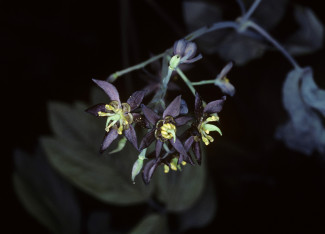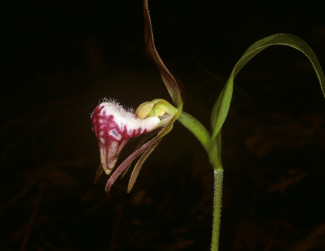
Johns Hopkins UniversityEst. 1876
America’s First Research University
Discover Plant Communities of the Adirondacks

After walking through woods and wetlands many times one notices that certain wildflower species occur together, and with particular species of trees, shrubs, and other plant species within a region. This unique assemblage of rather predictable plant species is known as a plant community. A plant community can be either natural (like mixed hardwood or spruce-fir forests) or anthropogenic (“man-derived”; like old fields, ditches, wastelands) in origin. Wildflower guides usually include a few words about the community in which each species occurs but they do not adequately define nor emphasize the importance of that community, nor list all of the species that are expected together there. And most wildflower guides highlight the species that occur in natural upland areas, excluding wetlands and anthropogenic communities. Yet many of the wildflowers of open wetlands and old fields are among our most important insect-pollinated plants, and without them, pollinating insects would suffer. Wildflowers of the Adirondacks begins by describing over twenty plant communities in the Adirondacks and the wildflower species expected in each. So besides better understanding the many wildflower species in the Adirondacks, we hope readers will gain an appreciation for the natural assemblages of these species and why they are where they are.

Image: Caulophyllum thalictroides © Donald J. Leopold
One of the highpoints of our job as educators is to meet with groups of people out in nature and talk about the plants encountered. Our delight comes from watching others embrace what we have spent decades intensely observing. Among our objectives for Wildflowers of the Adirondacks, is that we introduce people not only to new plant species, but to some of the less-visited communities in which they occur, like some of the wetland communities. Wetlands are often among the most difficult places to walk through and the buggiest of all – but well worth it! It is relatively easy to walk along public trails in upland forests and be engrossed by the common, showy plant species that characterize it. Perhaps that is why some wildflowers, like trillium, are so widely known. But few people have ventured out into bogs, fens, cedar swamps and other unique habitats that hold some of the most remarkable plant species in the Northeast. If you have ever enjoyed seeing a trillium, wait to you see the ram’s head lady’s slipper in person! These communities occur not only throughout the Adirondacks but throughout the Northeast, especially in the northern and central Appalachians, and the Great Lakes Region. Hence, although the title of this book suggests that it covers an area of only six million acres, one will find it equally indispensable throughout northeastern North America.
Interacting with so many people outside of academia over the years, we have found that few are aware of the many carnivorous (insectivorous) plant species in the Adirondacks, except for the purple pitcher plant. But one or two sundew species are likely not far away in these sunny peatlands. And if there is any shallow standing water nearby, the dazzling yellow flowers of bladderworts emerge on short, slender stalks, their hollow sacs below the water surface capturing their prey. All thrive in these nitrogen-deprived, acidic wetlands because they digest these tiny insects and other minuscule animals for sustenance.

Image: Cypripedium arietinum (ram’s head lady’s slipper) © Donald J. Leopold
Similarly, while many have experienced the jubilation of seeing a yellow or pink lady’s slipper while hiking, most are unaware of the nearly forty other species of terrestrial and wetland orchid species of the Adirondacks. Wildflowers of the Adirondacks celebrates these native orchid species. So another hope that we have is that this book will lead to people discovering new locations for some of the rarer species in the orchid family. Many of these species were once more abundant, but among the many plant species that excessive deer populations will obliterate, orchids are among a deer’s favorite food. With this and other disturbances increasing in intensity, like climate change, many of these species are at risk of becoming extirpated in the Adirondacks, the Northeast, and beyond. The saddest, unintended objective of this book is that it someday might become a historical account of what once was in this spectacular region.
So much of what we know about plants is from anecdotal observations; there is so much for all of us to learn. The process can start at any time in one’s life. One can do that without formal training and degrees, making learning about wildflowers gratifying to everyone. We hope this book opens up that process to many and adds to what others already appreciate about our wildflowers.
Order Wildflowers of the Adirondacks – published on February 11, 2020 – at the following link: https://jhupbooks.press.jhu.edu/title/wildflowers-adirondacks
Donald J. Leopold is a Distinguished Teaching Professor at SUNY College of Environmental Science and Forestry. He is the author or coauthor of many books, including Wildflowers of the Adirondacks, and Native Plants of the Northeast: A Guide for Gardening and Conservation.



